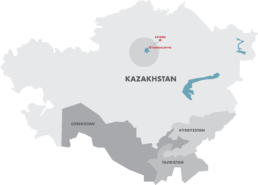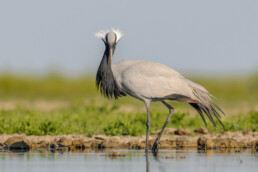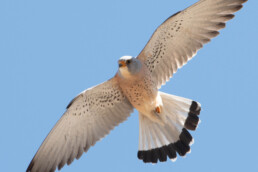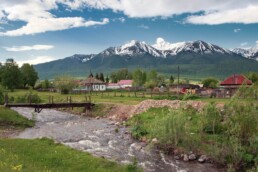UNIQUE.ADVENTURE.ROBUST.
This trip is all about photography, as we optimize our time in the field to take advantage of the best light of day. Sleep and fine dining take the back seat here! As such, it’s a very intense workshop, but also a rewarding one, in a place very few photographers ever visit. Come with an open mind, and prepare to be blown away by the immense Kazakh steppe.
A floating hide is a strange device: it’s essentially a floating tent, with a structure to install a camera on a gimbal head inside. The photographer, wearing waders or a suit, is in the water, under the hide. Being hidden, it’s possible to approach birds with care, and enjoy a very low viewing angle doing so. It is however a physically demanding activity.
Throughout this photography journey, we have a specific shortlist of exclusive species in mind. We will primarily aim at these species to get the best possible images. Besides these targets, we will also have opportunities to photograph other sublime species.

TOUR HIGHLIGHTS
Four core moments you'll never forget
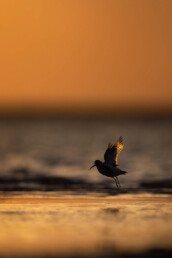
Travel under leadership of experienced photo leaders and have fun experiencing the massive wader migration of Central Asia.
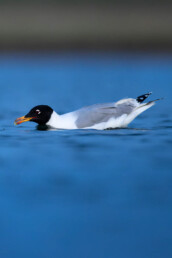
Float in steppe lakes to approach iconic species such as Red-necked Phalarope, Pallas’s Gull and Terek Sandpiper.
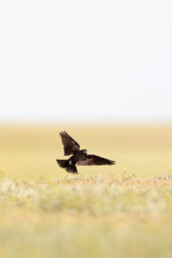
Witness the endless green steppes of the Central Asian steppe, rich with Black Larks, White-winged Larks and classy Pallid Harriers.
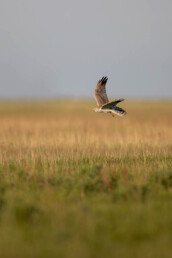
Challenge yourself to capture flighty Pallid Harriers in flight, as they hunt voles and mice over the vast steppes of northern Kazakhstan.
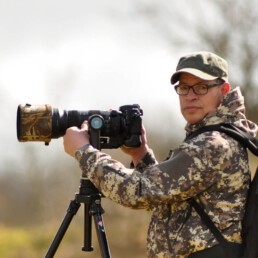
Meet your leader
Our one-week workshop will be guided by professional photographer Ed Michels. He is known for his colourful, uplifting imagery and loves a good adventure. He is the ideal person to lead this new expedition in Kazakhstan.
YOUR CENTRALASIA ITINERARY
Clients depart from home towards the capitol of Kazakhstan, Astana. There are several options, but they best come from Istanbul (Turkish Airlines). If you like to come in earlier, don’t hesitate to contact the RBT office, which will gladly help with additional hotel bookings.
NIGHT | On aircraft.
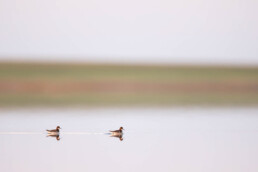
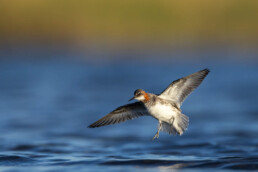
Even though we meet very early at the airport, everyone is thrilled and energetic because it’s the beginning of a unique adventure. We have a nice cup of coffee, change or withdraw some Kazakh tenge, and then we board our bus and start driving towards Korgalzhyn. We have about 2 hours to chat and sleep a little. As the sun rises, we arrive at the village that will be our base for the week. We enjoy a warm hearty breakfast, then check in at our accommodation and sleep. We get up around noon, enjoy a wonderful lunch, then head to the field for scouting. We survey the three main lakes we will photograph and the adjacent steppe areas, identifying the most promising areas. Clouds of Ruffs and Western Yellow Wagtails surround us, and Black Larks sing. We do a little bit of photography from the shore and then head back to the village, where we have dinner and assemble the floating hides so that they are ready for our early departure on the day after.
NIGHT | Basic guesthouse in Korgalzhyn village.
We start early, drive to the lakes and take the floating hides to the water. At 5.30, when the sun rises, we are all ready to shoot! Temminck’s Stints put up quite a show on the sandy shore as they chase each other between two meals. Above the Tern Pond, a whirlwind of stunning White-winged Terns puts our skill to the test as they grab insects from the surface and eat them in the air. The sheer number of birds, combined with their absence of fear, offers many opportunities to try, fail and re-try within minutes. When the sun is high in the sky, and the light is harsh, we leave the water and head back to Korgalzhyn for a delicious breakfast followed by a nap. A few hours later, we have lunch and then return to the steppe. The evening light is ideal for capturing the elegant Marsh Sandpiper as it wades in shallow water. We can create beautiful backgrounds for our images by placing the hide near the shore. Right after sunset is the best time to photograph the shy Pallas’s Gulls, as they seem to forget we are here and instead focus on catching insects from the water’s surface. We enjoy our packed dinner in the field and then head back to our guesthouse for some well-deserved rest
NIGHT | Basic guesthouse in Korgalzhyn village.
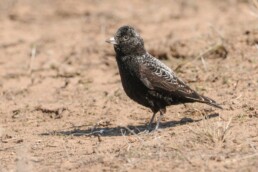
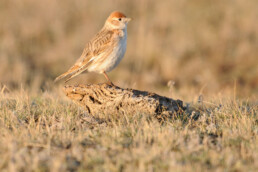
We leave the village early to be in the field for sunrise. While some of us go in the water again, others set up low-lying tents on another lake’s muddy shore. Dry and comfy, we lie down out of sight and wait for flocks of waders to stride in front of us. As it’s spring, they sport their most colorful plumage. Among Dunlins and Little Stints, the Curlew Sandpipers shine the brightest, with their rusty belly and curved bill.
Further but well within reach of our cameras, small groups of Common Shelducks display with much splashing and posturing. In the evening, we can return to the exact location to try our hand at backlit imagery. If we are lucky, the iconic Terek Sandpiper will nicely pose, allowing us to highlight its silhouette with delightful rim light. Creative photography makes us forget how tired we are, but soon it’s sunset, so we leave for a short night in Korgalzhyn.
NIGGHT | Basic guesthouse in Korgalzhyn village.
Early morning is an excellent time to photograph Pallid Harriers as they glide above the steppe, searching for a meal. We know a meadow they seem to favor, so we stand there with tripods and camouflage and wait for them to come to us. This is a unique opportunity to capture this exciting long-distance migratory raptor in typical habitat. Hopefully, we can photograph a successful hunt! While we wait for the harriers, Western Yellow Wagtails will probably perch on shrubs around us, singing and surveying their environment. We witness a pair of bonding Gull-billed Terns from the floating hide, one flying in to gift voles and lizards to the other, which sometimes doesn’t accept them! The evening photoshoot is exciting, as hundreds of Red-necked Phalaropes are dancing on the water, fearlessly feeding or taking off in a frenzy only to land back a minute later. These small endearing waders don’t mind humans, so they can be photographed up-close, even from the shore.
NIGHT | Basic guesthouse in Korgalzhyn village.
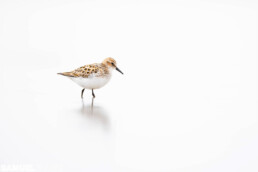
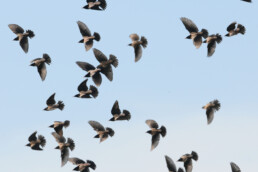
If the day is cloudy, we can sleep a bit longer and head to the field later, after breakfast. Overcast conditions are a boon for two reasons. The first one is that we can shoot longer (as long as it lasts!) because we don’t need to worry about light becoming harsh. The second reason is that it creates the perfect setting for high-key pictures, where the subject is only surrounded by white, be it the sky or its reflection in the water. It seems to work well with Little Stints, their pretty orange back feathers being the perfect counterpoint to the white background. On sandbanks, we look for Little Ringed Plovers and Black-winged Pratincoles. Later, we hide under camouflage near a Bobak Marmot den and try to photograph the chubby mammal. We also approach a Sand Martin colony and patiently wait, trying to create awe-inspiring flight shots of the fast swallows as they install their nests in sand banks. If the sky remains cloudy, we enjoy a relaxed dinner on the steppe and head back to the guesthouse when we feel like it.
NIGHT | Basic guesthouse in Korgalzhyn village.
Windy days are not uncommon in the steppe, and choppy waters are not a photographer’s best friend when one uses a floating hide. Fortunately, we have a few tricks to continue making images. We can hide in the reedbed, a bit further from the main action. We may find a Red-necked Grebe, a Paddyfield Warbler, or a Black-tailed Godwit. There might even be a Eurasian Bittern booming there! Another option is to strand the hide on the muddy shore. What we lose in mobility, we gain in stability. Chosen well, the location may yield a pair of Terek Sandpipers or a spectacular group of Ruffs in a complete breeding extravaganza. If it’s too windy, or if one wants a change of scenery, it is much recommended to spend an evening with the Black Larks. By then, they will be pretty used to us parking in the same spot every day, so they will use their favorite mound as if we weren’t there. Singing, feeding, showing off: these cute creatures are a show of their own and one big reason to visit the Kazakh steppe in spring. Lying down near their spot, under camouflage, allows us to create stunning images of them without disturbing them. It’s also an excellent opportunity to try backlit situations for our last day near Korgalzhyn.
NIGHT | Basic guesthouse in Korgalzhyn village.
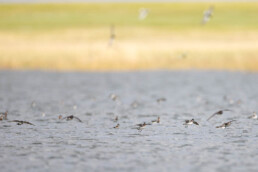
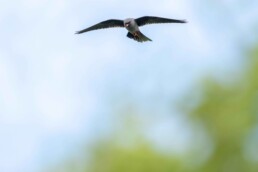
Our last early morning brings us to the lakes again. It is time to seek a species we have missed so far or simply take in the excellent steppe show one last time. The bushes near the village sometimes hold Common Cuckoos, Oriental Turtle Doves, or the tame Booted Warbler and its fluttery song. Pied Avocet and Greater Flamingo are usually quite shy, but maybe they want to show off to celebrate a successful photography tour in Kazakhstan. After our morning shoot, we head back to the village for lunch, pack our gear and depart to Astana. There, we spend a bit of time enjoying the futuristic architecture of the Kazakh capital around Baiterek before a tasty farewell dinner at our hotel. We depart in the middle of the night, heads full of memories and memory cards filled with great images.
NIGHT | Comfortable tourist hotel Astana.
A transfer will be provided very early this morning to Nursultan Nazarbayev International Airport (airport code NQZ), in time for the Turkish Airlines flight to Istanbul, currently scheduled to depart at 3:20 a.m.
- CLICK ON THE IMAGE TO ENLARGE
NEXT TOUR14 MAY - 21 MAY, 2024
Cost | $2.150 – flights not included
Single supplement | $400
Deposit | $600
Group size | minimum 4 and maximum 6
Availability | Spaces
Leader |Ed Michels
UPCOMING TOURS
22 May – 30 May, 2024 | Spaces
14 May – 21 May, 2025 | Spaces
22 May – 30 May, 2025 | Spaces
SITUATIONS
Our working location, in the buffer zone of Korgalzhyn State Reserve, is ideally located to offer a variety of photography situations. We have three main lakes nearby, each different in terms of habitat and thus bird species.
Flamingo Lake is very shallow. It is also quite sheltered from the wind, which means the surface will remain flat like a mirror even when the other lakes are troubled by waves. The iconic species here is the Greater Flamingo, but it’s a shy one. More accommodating are the Common Shelduck, the Little Stint, the Curlew Sandpiper, the Terek Sandpiper, the Dunlin and the Red-necked Phalarope. Because Flamingo Lake is so shallow, it’s very complicated to tread with a floating hide. We prefer to lie down on the shore, either in a hide or under a camouflage net, and let the birds come to us.
The Grebe Lake is the largest in the area, and also the deepest. It’s the realm of Black-necked Grebes, Whooper Swans and Red-necked Phalaropes. The shore attracts many waders, including Black-winged Pratincoles, terns and gulls. The banks have quite a gentle slope underwater, so it’s possible to take the floating hide to the water there. When the wind blows, the waters become choppy; then, the best strategy is often to strand the hide on the shore and wait for birds to come close. On dry ground, a colony of Collared Sand Martins offers more opportunities.
The Tern Pond is smaller but also richer in bird life. It’s a hunting ground for Red-necked Phalaropes, White-winged Terns and Pallas’s Gulls. The sandy and muddy shores attract stints, Ruffs and Marsh Sandpipers, along with Caspian and Gull-billed Terns. The reedbed offers rare but precious possibilities to shoot Paddyfield Warbler and Great Bittern. The creek that leads into the Tern Pond hosts Terek Sandpiper, Red-necked Grebe and Black-tailed Godwit.
The water there is very shallow (rarely more than a meter), making it an ideal location to work with waders in a floating hideThe surrounding steppe areas are also rich with stunning species, such as the common Black Lark or the elegant Pallid Harrier. Western Yellow Wagtails (breeding beema or migrating thunbergi) and Bobak Marmots can also be exciting targets. In this open habitat, we will patiently stand, sit or lie down in a tent or under a camouflage net, to photograph without being seen.
The village offers yet more photography opportunities: there may be Common Cuckoos on migration, Oriental Turtle Doves in the trees, Booted Warblers in the shrubs or Lesser Kestrels breeding in a ruined building.
With so many possibilities, we strive to remain flexible and allow everyone to get a taste of all situations. With a whole week of shooting, we get to choose who does what on a bi-daily basis, as a group. Wildlife photography, and floating hide photography in particular, is an exhausting activity – it’s totally ok to take it easy sometimes, to skip a session or stop early and come back to the bus to rest.
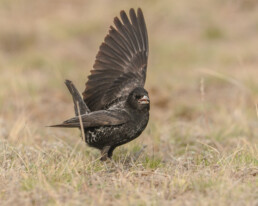
What’s Included?
Expert English-speaking expedition leader
All meals
All land transfers
Visa support (if needed)
Floating hides
Low tents – Hoki.
Camouflage gear
What’s Excluded?
International flight to/from Kazakhstan.
Personal expenses; laundry, telephone costs etc.
Alcoholic drinks.
Extra rooming not mentioned in the itinerary.
Meals on day one.
Single room supplement
Waders or a drysuit
Thermal underwear
Beanie-gloves-scarf
Preferred camera gear
One Telephoto lens, minimum 400mm
Wide-angle lens (optional)
Teleconverters (optional)
Tripod or monopod, according to taste, and head
For low-angle situations, we recommend a tripod that can spread flat, a ground pod or a bean bag
CURLEW SANDPIPER
YELLOW WAGTAIL | RACE; BEEMA
TEMMINCK’S STINT
READY FOR YOUR NEXT ADVENTURE?
Reserve your spot on our Floating Hide photography expedition now


